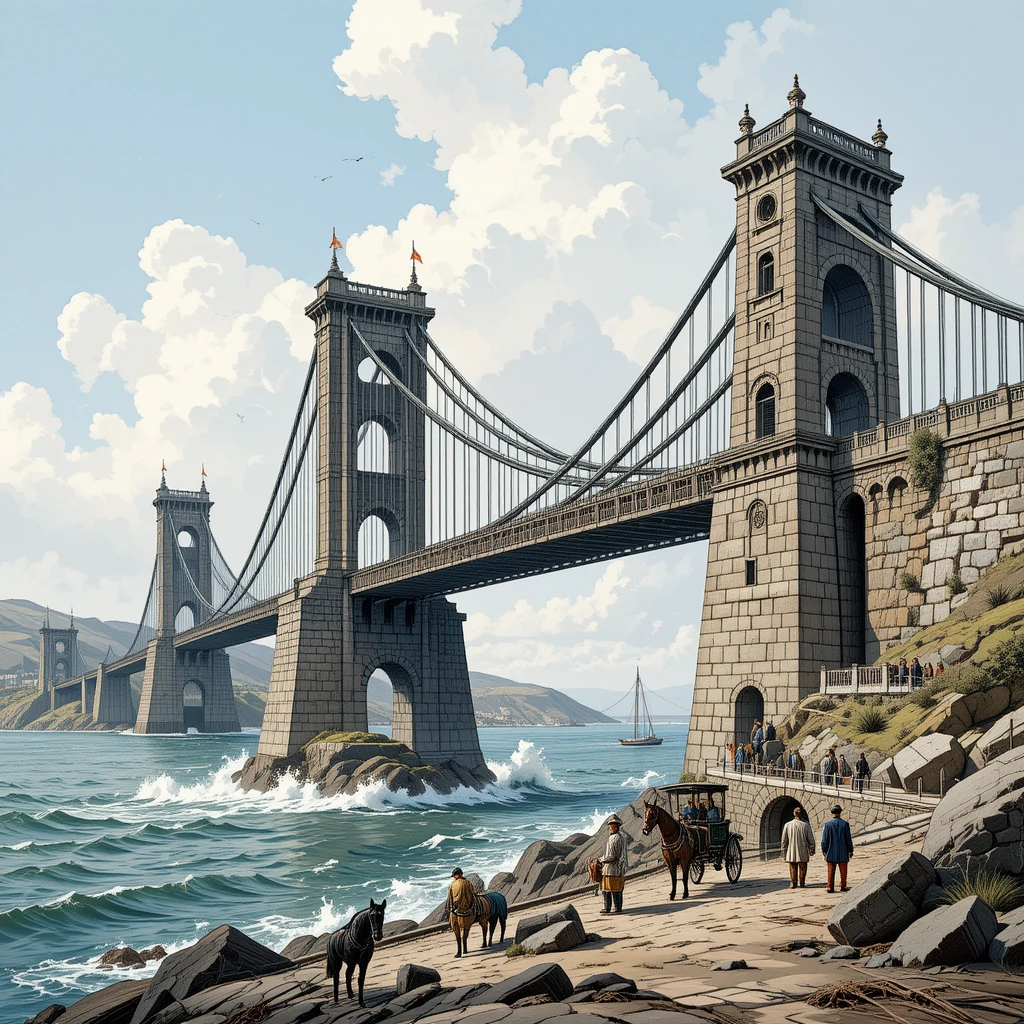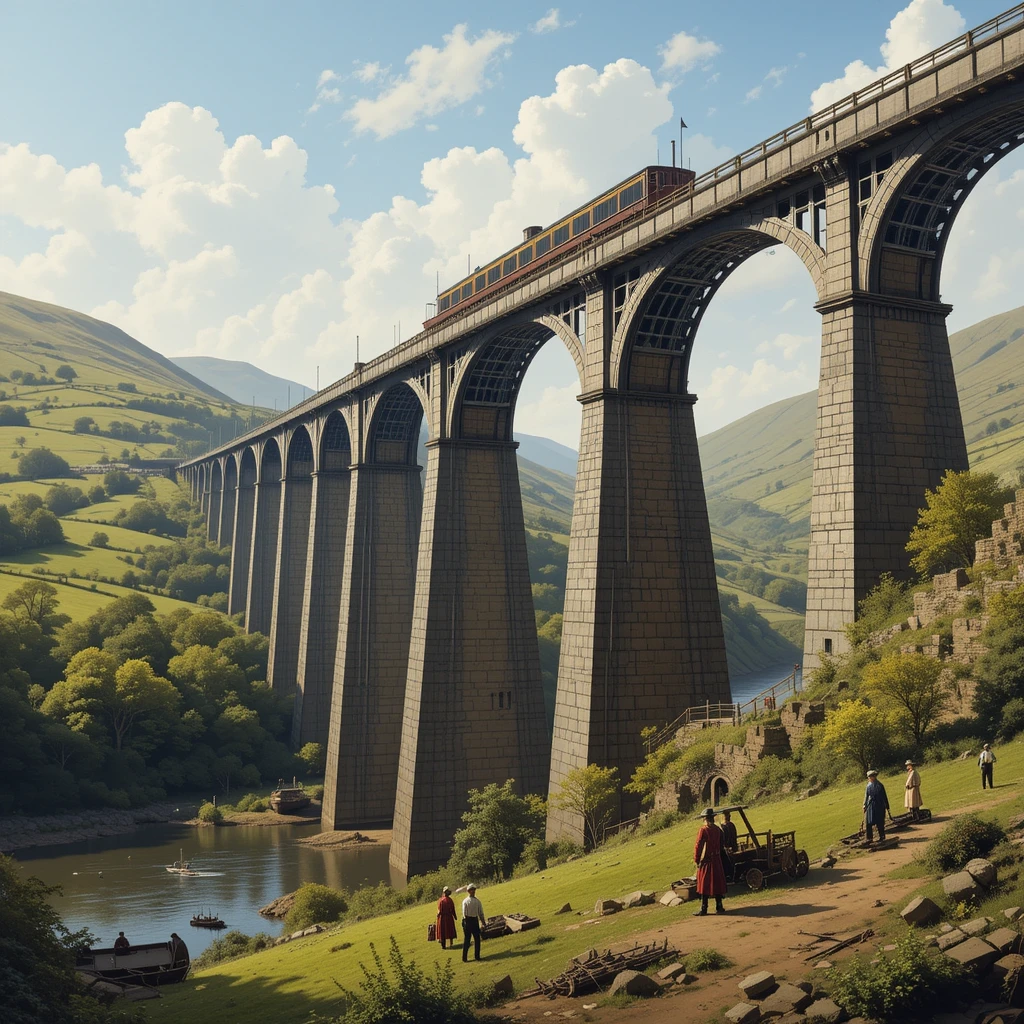Thomas Telford (1757–1834), a Scottish civil engineer, architect, and stonemason, transformed Britain’s infrastructure during the Industrial Revolution. Known as the “Colossus of Roads” for constructing over 1,000 miles of highways, Telford’s innovations in roads, bridges, canals, and harbors revolutionized transportation and trade. Rising from poverty through self-education, he founded the Institution of Civil Engineers in 1818, professionalizing the field. This article, grounded in primary sources like Telford’s autobiography, letters, and reports, provides a detailed account of his life, initiatives, and lasting contributions.

Table of Contents
Early Life and Path to Engineering
Born on August 9, 1757, in Westerkirk, Dumfriesshire, Scotland, Thomas Telford grew up in the rugged Eskdale valley. His father, a shepherd, died shortly after his birth, leaving him in the care of his mother, Janet Jackson, until her death in 1794. Educated at the local parish school, Telford supplemented his learning by borrowing books and working as a shepherd boy during summers. His early poem, “Eskdale,” captures his affection for his homeland: “Thy pleasant banks, O Esk! and shady groves, / The seat of innocence and simple loves, / Demand my lay!” [Citation 23]
Telford began as an apprentice stonemason in Langholm at age 12, working with local sandstone and lime mortar on farmhouses and small bridges during regional improvements under the Duke of Buccleuch. He valued practical experience, writing: “for how can a man give judicious directions unless he possesses personal knowledge of the details requisite to effect his ultimate purpose in the best and cheapest manner?” [Citation 23] In 1779, he moved to Edinburgh, contributing to the New Town, and by 1782, he worked as a mason on Somerset House in London, noting it as “a new and extensive field for observation.” [Citation 23]

In 1787, appointed surveyor of public works in Shropshire, Telford transitioned to engineering. His first major project, the iron Buildwas Bridge (1796), marked his shift to civil engineering. By 1793, he embraced the Ellesmere Canal project, stating: “feeling in myself a stronger disposition for executing works of importance and magnitude than for the details of house architecture, I did not hesitate.” [Citation 23] His 1794 letter on the Ellesmere Canal voyage reflects early canal design insights. [Citation 66]
Major Initiatives and Contributions
Telford’s projects, including over 1,000 bridges, 1,000 miles of roads, and extensive canals, prioritized durability and economic impact. His 1802 survey of Scotland’s highlands proposed infrastructure to address poverty and emigration, shaping his career. [Citation 45]
Roads
Telford constructed ~920 miles of roads in Scotland’s Highlands (1803–1821), including 1,117 bridges, under the Commissioners for Highland Roads and Bridges. His designs used layered gravel foundations and cross-drains every mile: “By adhering to this mode… works performed with remarkable perfection.” Costs averaged £400 per mile, totaling £368,099. [Citation 23] The Glasgow-Carlisle Road (1814–1816, 69 miles, £800–1,000 per mile) improved mail delivery: “The mail would arrive three hours sooner at Glasgow.” [Citation 23] The Holyhead Road (1810–1825) enhanced London-Dublin routes, consolidating turnpike trusts: “accurate maps and sections… necessity for Improvements rendered manifest.” [Citation 23] Lanarkshire roads (1820, 65 miles) transformed ravines: “Traveller has now smooth surfaces, with easy ascents.” [Citation 23] His 21st report to the Commissioners details progress. [Citation 55]

Bridges
Telford pioneered cast-iron and suspension bridges. Buildwas Bridge (1796, 130 ft, £6,034) used flat arches. [Citation 23] Bewdley Bridge (1798, £9,264) spanned the Severn. [Citation 23] Tongueland Bridge (1805–1806, 112 ft, £7,716): “foundation-stone laid 28th March 1805.” [Citation 23] The Menai Suspension Bridge (1819–1826, 580 ft, £127,331), a global first, used wrought-iron chains: “a national and splendid specimen.” [Citation 23] Conwy Suspension Bridge (1826, 327 ft) overcame tidal currents. [Citation 23] Craigellachie Bridge (1814, £2,000–14,000) used ironwork by William Hazledine, whom Telford praised: “Merlin Hazledine.” [Citation 22] Dean Bridge (1829–1831) and Glasgow Bridge (1833–1836, 560 ft) integrated urban needs. [Citation 20] A 1816 letter planned Bangor Ferry improvements. [Citation 67]

Canals
Telford’s canals used innovative materials. The Ellesmere Canal (1793–1805, 103 miles, £67,916) featured the Pontcysyllte Aqueduct (£47,018): “iron… more durable than timber.” [Citation 23] The Caledonian Canal (1803–1822, 60 miles, £982,359) used 29 locks, overcoming wartime cost rises: “locks made of compressed mud.” [Citation 23] The Göta Canal in Sweden (1808–1832, 120 miles) earned a gold medal. [Citation 23] Birmingham canal improvements (1824–1826) enhanced navigation. [Citation 23]

Harbors and Other Works
Telford improved over 40 harbors, including Aberdeen (£33,700) and Dundee (1815, floating-dock). [Citation 23] Dover’s 1834 survey addressed shingle issues (£20,000). [Citation 23] Drainage projects like the Nene Outfall boosted trade to 108,000 tons annually. [Citation 23] St. Katharine Docks (1824–1828) used steam engines. [Citation 23]
Legacy and Later Years
Telford co-founded the Institution of Civil Engineers in 1818, serving as its first president and advocating practical training: “Education of a civil engineer should not be too refined.” [Citation 23] Elected a Fellow of the Royal Society in 1827, he mentored future engineers. His 1833 diary reflects on late projects. [Citation 19] Telford died on September 2, 1834, in London, buried in Westminster Abbey. His will bequeathed 1,308 files to the ICE, including London Bridge plans. [Citation 20]
Telford’s empirical designs and infrastructure legacy underpinned Britain’s industrial growth, with many works still in use.
References (Primary Sources)
- Telford, Thomas. Life of Thomas Telford, Civil Engineer, Written by Himself. Edited by John Rickman. London, 1838. Available at: https://archive.org/stream/dli.bengal.10689.19434/10689.19434_djvu.txt
- The Telford Papers. Institution of Civil Engineers collection, 1772–1853. The National Archives (UK): https://discovery.nationalarchives.gov.uk/details/r/72a2aa6c-188c-4d2b-9667-f26845379572
- Diary of Thomas Telford. National Library of Scotland, Acc.3599 (MS.9157), 1833: https://manuscripts.nls.uk/repositories/2/resources/6665
- Thomas Telford, William Hazledine and John Simpson. Letters and accounts: https://www.pontcysyllte-aqueduct.co.uk/wp-content/uploads/2021/01/Telfords-Shrewsbury-team-Nov-2007-min.pdf
- Telford, Thomas. A Survey and Report of the Coasts and Central Highlands of Scotland. 1802. Excerpts in autobiography.
- Telford, Thomas. Reports to the Commissioners for Highland Roads and Bridges, 21st Report, 1824: https://www.ambaile.org.uk/asset/31200/
- Telford, Thomas. Letter on Ellesmere Canal voyage, 1794. National Library of Scotland: https://manuscripts.nls.uk/repositories/2/resources/22154
- Telford, Thomas. Letter to Bangor Ferry agent, July 20, 1816. National Library of Wales: https://archives.library.wales/index.php/thomas-telford-letter
